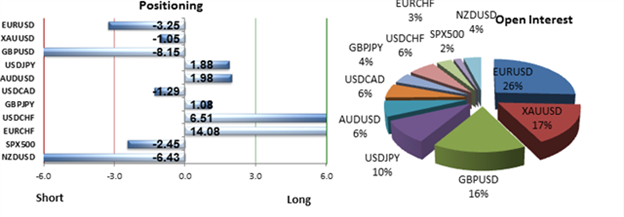Talking Points:* Sentiment helps decipher traders feelings towards an asset
* SSI shows net positioning on currency pairs
* Changes in sentiment provide insight into trends, and market reversals
SSI (Speculative Sentiment Index) is a proprietary tool to display retail positioning in real-time to display retail-market sentiment. Once a trader understands how SSI works and how to read the sentiment data, it can then be worked in to any existing trading strategy.
So today we will examine what sentiment is and how you can analyze sentiment through SSI data.
 Market Sentiment
Market SentimentMarket sentiment in its most basic definition, defines how investors feel about a particular market or financial instrument. As traders, sentiment becomes more positive as general market consensus becomes more positive. Likewise, if market participants begin to have a negative attitude sentiment can become negative.
While sentiment is not unique to the Forex market, it can be directly translated to currency pairs. Contrarian investors will look for crowds to either buy or sell a specific currency pair, while waiting to take a position in the opposite direction of sentiment. The graph above shows sentiment in action. Going back to November of last year sentiment has been negative on the GBPUSD, however prices have continued trending higher. Sentiment has recently become even more extreme as the majority of traders in this case are attempting to pick a top on the GBPUSD.
Now that you are more familiar with sentiment, let’s look how we can analyze sentiment in the Forex market.
 SSI
SSISSI is a ratio that gives us a picture of trader sentiment. SSI reveals trader positioning by determining if there are more positions net long than short, and if so by how much. Above we can see the current SSI ratios posted on DailyFX.com.
If clients are net short a currency pair SSI will be negative, and if clients are net long the number will be positive. As mentioned above, the more extreme the SSI reading becomes, the more credence the information should be given.
Using our example again with the GBPUSD, the last reading on SSI was -8.15. This ratio means that trader’s positions are net short at a rate over 8 to 1 when compared to all open buying interest. This can be interpreted again as traders attempting to position themselves for a possible turn in the market. Contrarian investors knowing this can look to open new long GBPUSD positions back in the direction of the prevailing trend.
 Changes in SSI
Changes in SSILastly, traders should also be aware of changes in sentiment. Changes in sentiment can be used to decipher whether trends are set to continue, pause or even reverse. In the event that sentiment is at an extreme, a reduction in net open interest can signal that a trend is winding down. Likewise if a pair with neutral sentiment begins changing rapidly, in one specific direction, this can signal a potential change in market direction.